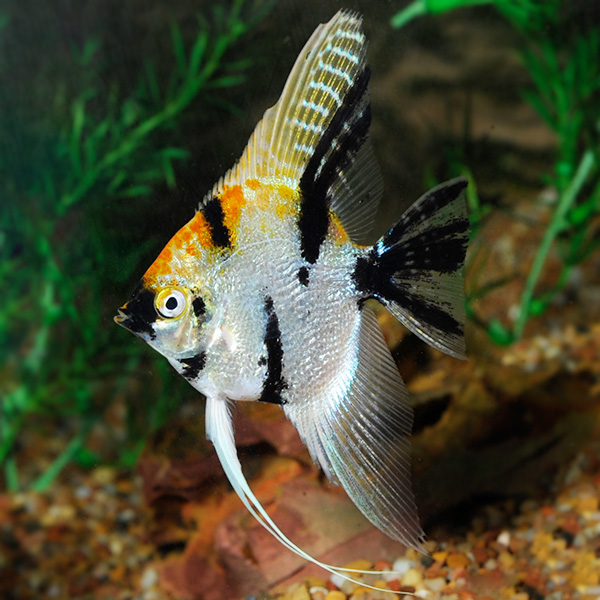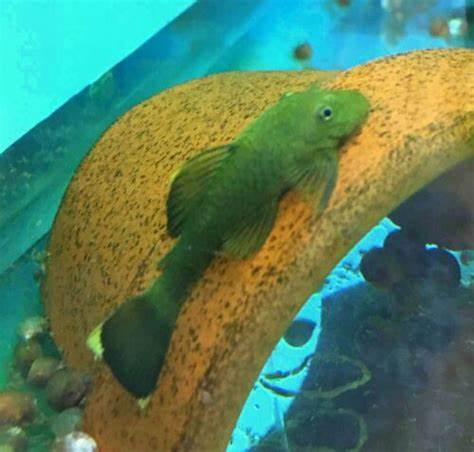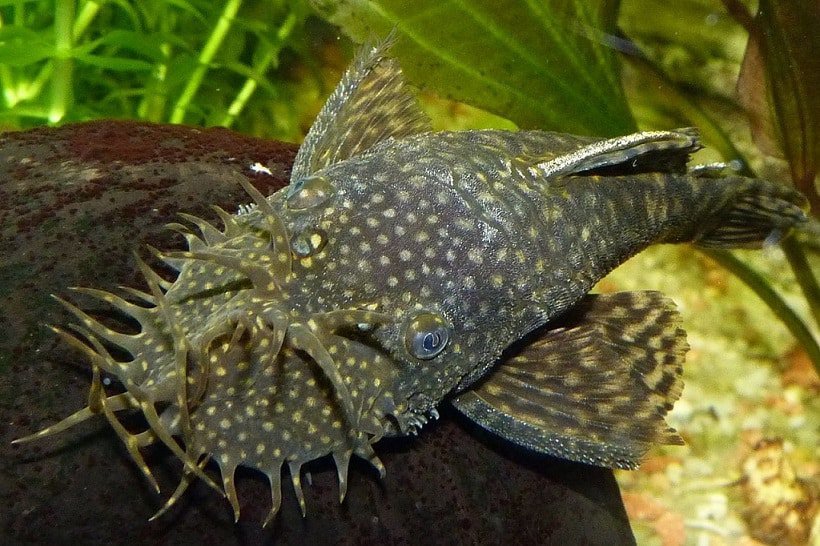Aulonocara stuartgranti, hansbaenschi (Chiloelo) or Red Shoulder Peacock is a popular species of peacock cichlid found among African cichlid hobbyists. This species of Aulonocara is native to the waters of Lake Malawi, in the areas of Chiloelo and Mozambique. Males develop a dark metallic blue color that covers their face and most of their body, including their dorsal fin, anal fin, and tail fin. Behind their gills or in the “shoulder region” they develop a dark red color which extends down to the tips of their pelvic fins. Males will get to be about 6″ in length and females will be a little smaller.
These cichlids make a great choice for the beginner cichlid keeper and are appealing to the advanced aquarist as well. They are easy to care for, easy to feed, and relatively undemanding aquarium residents. They are also fairly peaceful, making good inhabitants for the community tank and will readily breed. The aquarium does need regular water changes and good filtration. They are susceptible to Malawi bloat as well as the typical diseases that effect all freshwater fish if the tank is not maintained.
Though The Red Shoulder Peacock is an omnivore it will eat mostly meaty foods. It there are plants in the aquarium it usually won’t touch them. In the wild, they feed on a variety of live foods, especially small bottom-dwelling invertebrates. In the aquarium provide them with a meaty diet; cichlid pellets, frozen and freeze-dried daphnia, and brine shrimp are excellent choices. Avoid beef heart, tubifex and bloodworms as they can contribute to a disease called “Malawi bloat. Shrimp mixes are also a good choice and just as nutritious. Feed once a day when young and 5 to 6 times a week when adults unless they are breeding. Avoid the desire to feed this fish more often than it needs, as this will keep the water quality higher over a longer time.
Peacocks are hardy fish, but like all Malawi Cichlids, they will deteriorate under poor water conditions. The Malawi fish are usually kept at a higher pH, which means that ammonia is more lethal, so regular water changes are a must. They are also a messy fish because they eat mostly protein foods, which puts an additional biological load on the filtration system. The tank will need water changes of between 20 – 50% a week, depending on the bio load.




Reviews
There are no reviews yet.